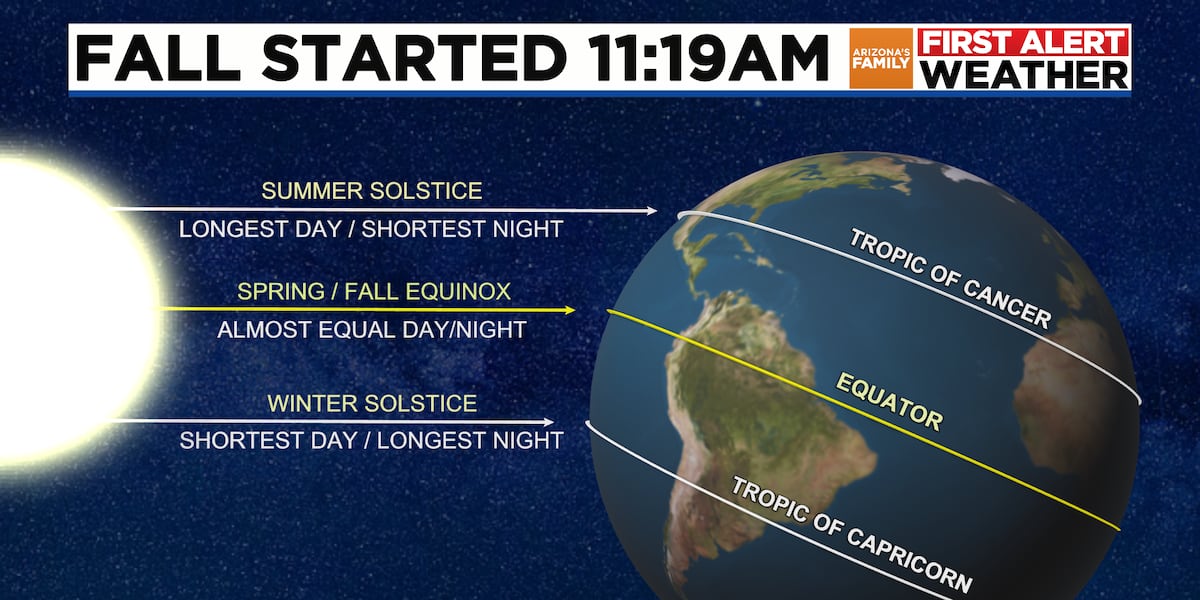PHOENIX (AZFamily) — Autumn arrived at 11:19AM Monday. Officially called the autumnal equinox, this is the exact time that the earth is tilted in such as way that the sun’s ray directly hit the equator. The sun’s rays also directly hit the equator during the spring equinox.
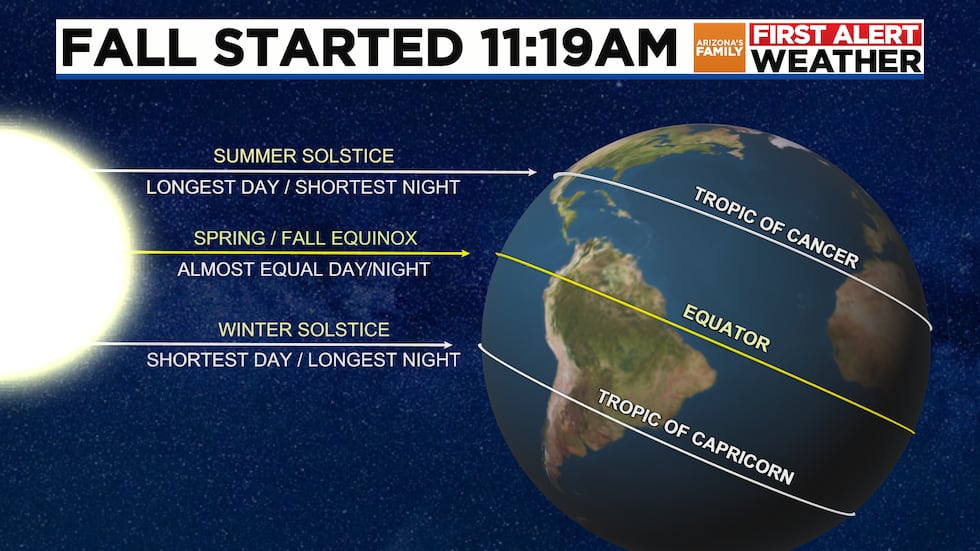 Fall Explainer(3TV/CBS 5)
Fall Explainer(3TV/CBS 5)
In the graphic above, note that the sun’s rays directly hit the Tropic of Cancer on the first day of summer. On the first day of winter, the sun’s rays directly hit the Tropic of Capricorn.
If the first day of winter is the shortest day of the year, and the first day of summer is the longest day of the year, shouldn’t the first day of fall have equal daylight and darkness? You might think so, but the first day of fall here in the Valley actually has a little more daylight than darkness. In fact, it has 12 hours and 7 minutes of daylight.
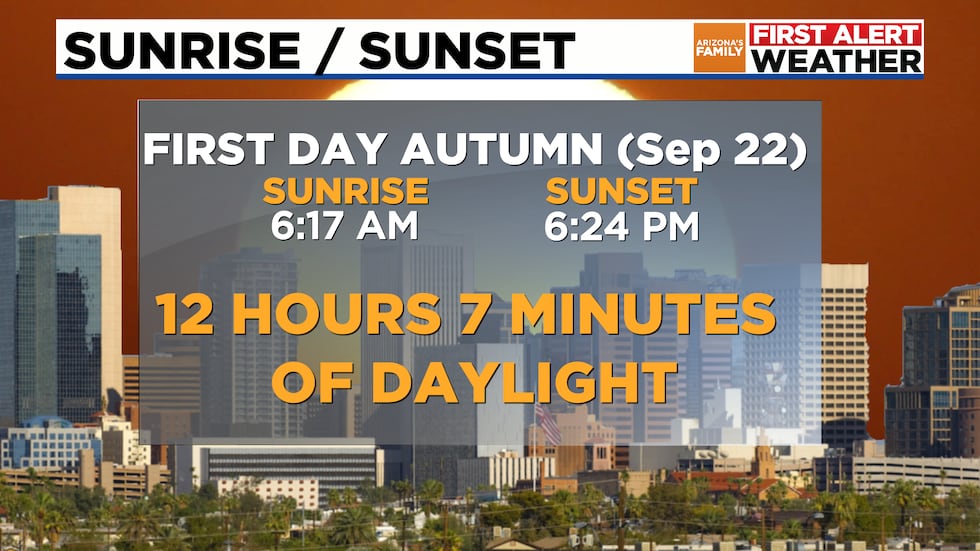 Sunrise Sunset First Day Fall(3TV/CBS 5)
Sunrise Sunset First Day Fall(3TV/CBS 5)
Part of the reason is that the sun is not a single point, it’s a disc. During sunset, most almanacs in our area define sunset as the time when the trailing edge of the sun is below the western horizon, NOT when the leading edge is touching the western horizon. This adds an extra few minutes of “daylight”.
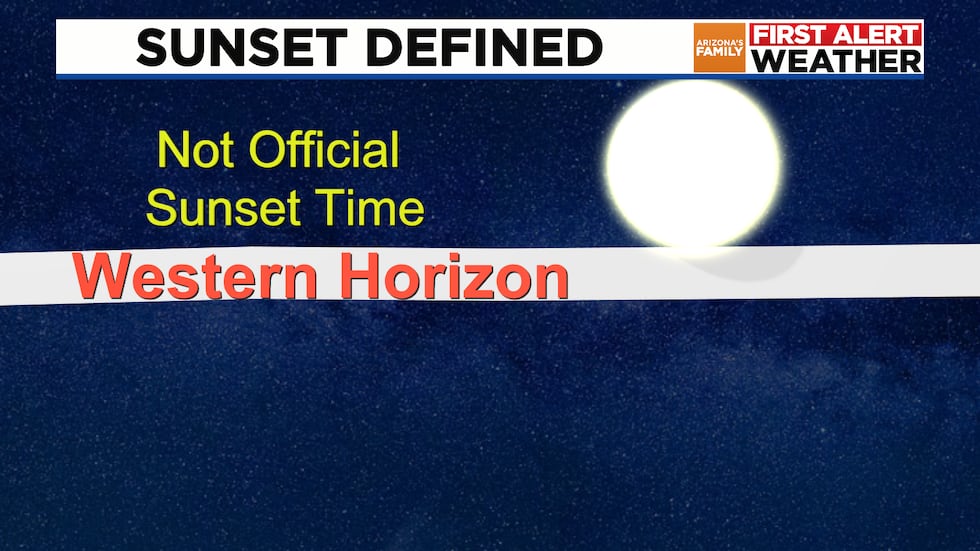 Sunset Time Explained(3TV/CBS 5)
Sunset Time Explained(3TV/CBS 5)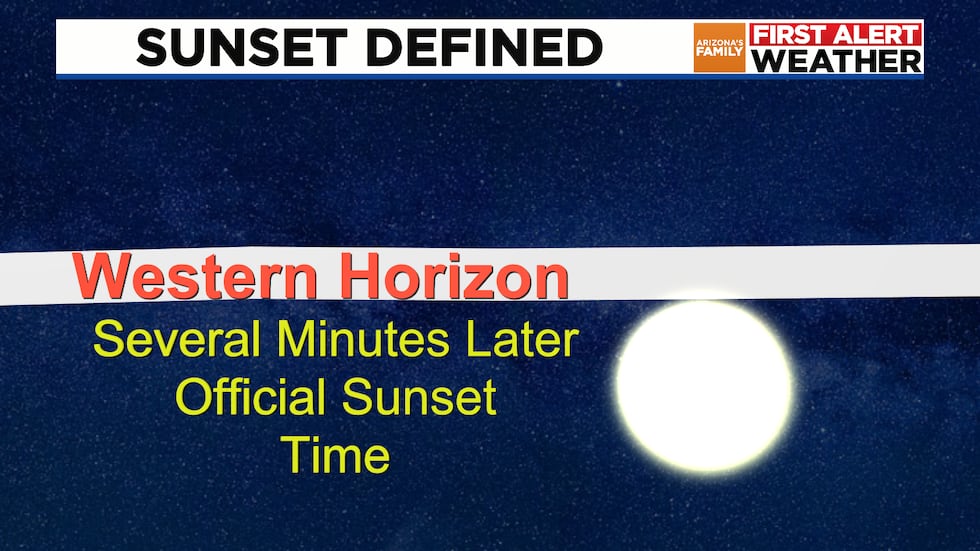 Sunset Time Defined(3TV/CBS 5)
Sunset Time Defined(3TV/CBS 5)
On the opposite end, sunrise is usually defined by almanacs as when then leading edge of the sun hits the eastern horizon, NOT when the trailing edge passes the horizon. This also adds an extra few minutes to the daytime hours.
Finally, the sun’s light is refracted through the atmosphere as it rises and sets. This bends the light in a way that also adds a little extra time to the daylight hours.
See a spelling or grammatical error in our story? Please click here to report it.
Do you have a photo or video of a breaking news story? Send it to us here with a brief description.
Copyright 2025 KTVK/KPHO. All rights reserved.
